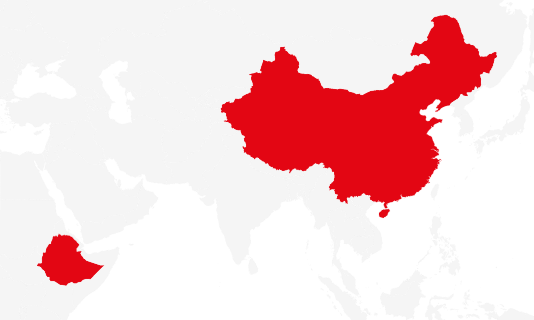- About
- Topics
- Picks
- Audio
- Story
- In-Depth
- Opinion
- News
- Donate
- Signup for our newsletterOur Editors' Best Picks.Send
Read, Debate: Engage.
| November 05, 2015 | |
|---|---|
| topic: | Economic Opportunity |
| tags: | #China, #Ethiopia, #International Monetary Fund, #pollution, #railway, #UN Habitat, #urban transport |
| located: | China, Ethiopia |
| by: | Bob Koigi |
The two line, 34-kilometre system recently unveiled, replaces the archaic, old and polluting buses dubbed ‘blue donkeys’ that have been the predominant source of transport for the over 5 million dwellers of Ethiopia’s capital Addis Ababa.
But it also demonstrates Ethiopia’s growing obsession with using infrastructure projects to grow its economy which currently stands at 10 per cent and which has received a thumbs up from institutions like the International Monetary Fund. China is at the heart of the metro project both in financing and construction. The project has cost the Ethiopian government $475m with 85 per cent of this having been covered by the Export Import Bank of China through a loan facility while China Railway Engineering Corporation is handling construction.
Snaking its way from industrial zones, city center to historical sites in the 125 year old city, the light rail system dubbed The electrified Addis Ababa Light Rail Transit (AA-LRT) is seen as government’s attempt to create convenience and motivate the country’s workforce which it counts on to propel the economy. For example, a ticket covering the 17 kilometer journey costs 6 Ethiopian birr, $0.29, which is four times cheaper than the fares of minibuses. On average the train is envisaged to carry 15,000 passengers per hour in one direction, operating at a top speed of 44 miles per hour while operating 16 hours every day including the weekends. And with power interruptions and outages being common in the country, the project has left nothing to chance, ensuring that there is a dedicated grid for the rail system with the rail cars getting electricity supply from overhead power lines. Four substations have also been set up to supply on average 160megawatts of power to the system. It will cost the government approximately 1.5 billion birr, $72million, each year to run the system.
“The electrified rail system is our commitment to addressing the perennial urban transportation problems that have slowed the growth momentum in our country and made cost of doing business very expensive. It is a historic moment for Ethiopia and a precursor to a more prosperous Ethiopia as we have been envisioning,” said Workneh Gebeyehu, Ethiopian Minister of Transport during the launch.
Ethiopia now joins other African countries like South Africa, Morocco, Egypt and Algeria that have modernized urban transport by building electric rail system to address the twin and interconnected problems of teeming urban population and a chaotic transport sector that has cost countries billions in revenue while chocking economic development.
In most Sub Saharan African cities, it is estimated that workers spend on average four hours a day stuck in traffic headed to or from low paying jobs which dampens productivity. In Dakar the capital of Senegal for example one million hours are cumulatively lost every day due to congestion while in Nairobi, Kenya’s capital, traffic snafu costs the country $578,000 every day. Governments spend 50 per cent of foreign exchange earnings to import fossil fuels for urban transport which are further chocking cities with hazardous gasses.
According to Brian Williams from UN Habitat in a presentation dubbed Sustainable urban transport in Africa: Issues and challenges, by the year 2020 the chaotic transport sector in Africa if not regulated will kill more than HIV, war and TB combined, with the poor and the children forming the bulk of the casualties.
With over a quarter of the 100 fastest growing cities in the world being found in Africa, the rate of urbanization has equally been on an upward trajectory. Currently some 320 million Africans, representing 37 per cent of the population, live in urban areas a figure forecasted to grow to 50 per cent, or 654 million people by 2030. This unprecedented growth is set to put further strain on an already chocking urban transport system. Smarter ways like the Ethiopian light rail system have been touted as a cleaner more efficient alternative to address the looming transport catastrophe.
By copying the embed code below, you agree to adhere to our republishing guidelines.

